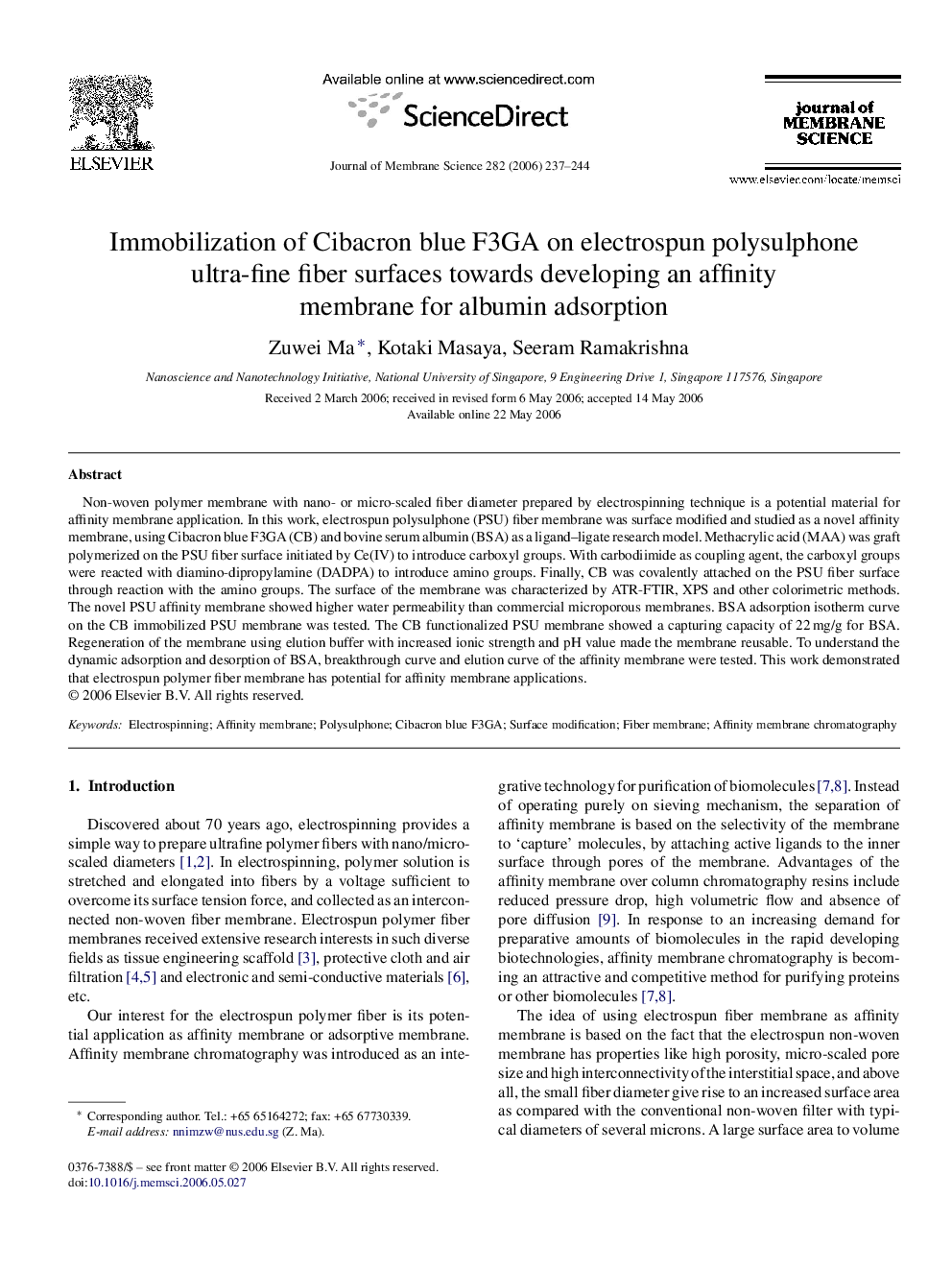| Article ID | Journal | Published Year | Pages | File Type |
|---|---|---|---|---|
| 639165 | Journal of Membrane Science | 2006 | 8 Pages |
Non-woven polymer membrane with nano- or micro-scaled fiber diameter prepared by electrospinning technique is a potential material for affinity membrane application. In this work, electrospun polysulphone (PSU) fiber membrane was surface modified and studied as a novel affinity membrane, using Cibacron blue F3GA (CB) and bovine serum albumin (BSA) as a ligand–ligate research model. Methacrylic acid (MAA) was graft polymerized on the PSU fiber surface initiated by Ce(IV) to introduce carboxyl groups. With carbodiimide as coupling agent, the carboxyl groups were reacted with diamino-dipropylamine (DADPA) to introduce amino groups. Finally, CB was covalently attached on the PSU fiber surface through reaction with the amino groups. The surface of the membrane was characterized by ATR-FTIR, XPS and other colorimetric methods. The novel PSU affinity membrane showed higher water permeability than commercial microporous membranes. BSA adsorption isotherm curve on the CB immobilized PSU membrane was tested. The CB functionalized PSU membrane showed a capturing capacity of 22 mg/g for BSA. Regeneration of the membrane using elution buffer with increased ionic strength and pH value made the membrane reusable. To understand the dynamic adsorption and desorption of BSA, breakthrough curve and elution curve of the affinity membrane were tested. This work demonstrated that electrospun polymer fiber membrane has potential for affinity membrane applications.
